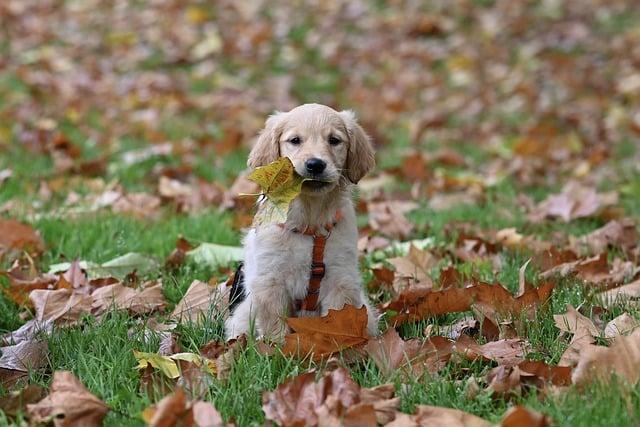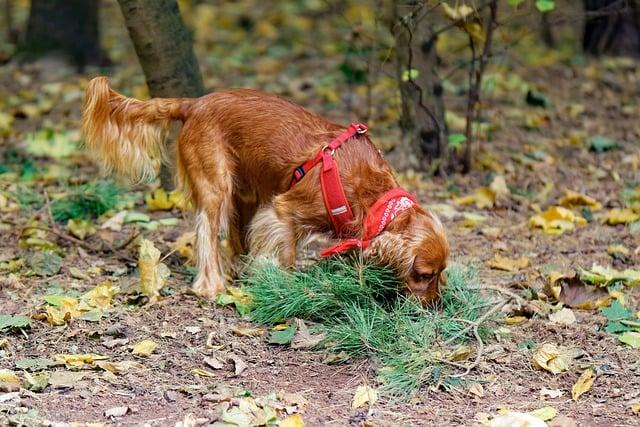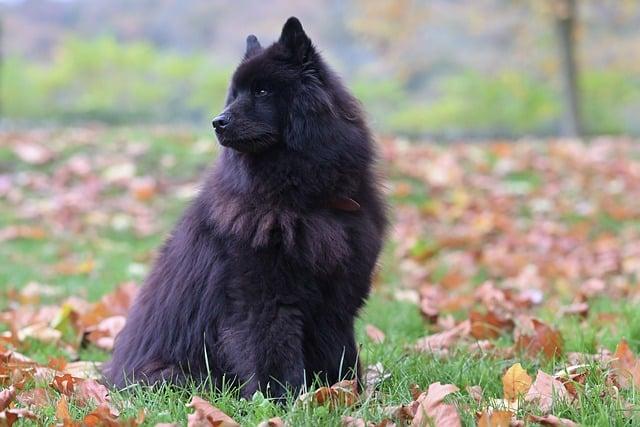When Max, a golden retriever, greeted his owner with enthusiastic licks after a long day, it sparked a debate: do dog licks mean kisses? Research shows that dogs lick to express affection, communicate, and even seek comfort. Just like a child’s hug, a dog’s lick can convey love and loyalty. So, the next time your furry friend showers you with slobbery affection, remember: it’s their way of saying “I love you.” Embrace those licks as heartfelt kisses, a testament to the bond you share.
Contents
- Understanding the Emotional Significance of Dog Licks in Canine Behavior
- The Science Behind Dog Licking: Communication and Affection
- Interpreting Your Dogs Licks: What They Really Mean for Your Relationship
- Promoting Healthy Interactions: Guidelines for Responding to Your Dogs Affectionate Licks
- Q&A
Understanding the Emotional Significance of Dog Licks in Canine Behavior
When we observe our furry companions showering us with licks, it’s easy to interpret these actions as affectionate gestures. However, the emotional significance of dog licks extends far beyond mere expressions of love. Understanding the underlying motivations can deepen our bond with our pets and enhance our interactions with them.
Dogs use licking as a form of communication, conveying a variety of emotions and intentions. Some of the key reasons behind this behavior include:
- Affection: Licking can indeed signify love and attachment, akin to a gentle kiss.
- Grooming: Dogs often lick to groom themselves or others, reinforcing social bonds within their pack.
- Exploration: Canines explore their environment through taste and smell, and licking helps them gather information.
- Seeking Attention: A dog may lick to get your attention, signaling a desire for interaction or play.
Moreover, licking can serve as a self-soothing mechanism for dogs. When they feel anxious or stressed, they may lick themselves or their owners to calm down. This behavior can be particularly evident during thunderstorms or when they are left alone. Recognizing this can help us respond appropriately, providing comfort and reassurance when our pets need it most.
It’s also essential to consider the context in which licking occurs. The emotional significance can vary based on the situation and the relationship between the dog and the person being licked. For instance, a dog may lick a new acquaintance out of curiosity, while a long-time companion may lick as a sign of loyalty and affection. By paying attention to these nuances, we can better understand our dogs’ emotional landscapes and foster a more profound connection with them.
The Science Behind Dog Licking: Communication and Affection
When your furry friend showers you with licks, it’s easy to interpret these gestures as affectionate kisses. However, the reality is that dog licking serves multiple purposes, deeply rooted in their instinctual behavior and social communication. Understanding the motivations behind this action can enhance the bond you share with your pet and provide insight into their emotional state.
One of the primary reasons dogs lick is to communicate. In the canine world, licking is a form of social interaction that conveys various messages. For instance, a dog may lick another dog to show submission or to reinforce social bonds. This behavior is often seen in puppies who lick their mothers as a way to solicit care and attention. Therefore, when your dog licks you, it may be expressing a desire for companionship or signaling that they view you as part of their pack.
Moreover, licking can also be a sign of affection. Dogs have a unique way of expressing love, and licking is one of their most common methods. This behavior releases endorphins, which can create a sense of comfort and happiness for both the dog and the recipient of the licks. It’s not uncommon for dogs to lick their owners when they are feeling relaxed and content, reinforcing the emotional connection between you and your pet.
Additionally, licking can serve as a self-soothing mechanism for dogs. In stressful situations, a dog may lick themselves or their owners as a way to calm down. This behavior can be particularly evident during times of anxiety, such as thunderstorms or when they are left alone. Recognizing the context in which your dog licks can help you understand their emotional needs and respond appropriately, ensuring that they feel secure and loved.
Interpreting Your Dogs Licks: What They Really Mean for Your Relationship
When your dog showers you with licks, it can feel like a warm embrace, a gesture of affection that transcends species. However, understanding the true meaning behind these licks can deepen your bond and enhance your relationship. Dogs use licking as a form of communication, and while it often signifies love and affection, it can also convey a variety of other messages. Recognizing these nuances can help you respond appropriately and strengthen your connection.
One of the primary reasons dogs lick is to express **affection**. Just as humans might hug or kiss their loved ones, dogs lick to show they care. This behavior is rooted in their puppyhood, where they would lick their mother to solicit attention and nourishment. When your dog licks you, it’s their way of saying, “I love you.” This affectionate licking can be a comforting ritual that reinforces your bond, making it essential to acknowledge and reciprocate this behavior.
However, licking can also indicate **anxiety or stress**. If your dog is licking excessively, it may be a sign that they are feeling overwhelmed or insecure. In such cases, it’s crucial to assess their environment and identify any potential triggers. Providing a calm and safe space can help alleviate their anxiety. By understanding this aspect of licking, you can take proactive steps to ensure your dog feels secure, ultimately fostering a healthier relationship.
Lastly, licking can serve as a means of **exploration**. Dogs experience the world through their senses, and their tongues are powerful tools for gathering information. When your dog licks you, they might be trying to learn more about you or your emotions. This inquisitive behavior can be an invitation for you to engage with them, whether through play or training. By recognizing licking as a form of exploration, you can create opportunities for interaction that enrich your relationship and enhance your dog’s overall well-being.
Promoting Healthy Interactions: Guidelines for Responding to Your Dogs Affectionate Licks
Understanding your dog’s affectionate licks can enhance the bond you share. While many pet owners interpret these licks as “kisses,” it’s essential to recognize the underlying reasons for this behavior. Dogs may lick for various reasons, including showing affection, seeking attention, or even tasting something interesting. By acknowledging these motivations, you can respond in ways that promote healthy interactions and reinforce positive behaviors.
When your dog licks you, consider the context of the situation. If your dog approaches you after a long day apart, their licks may signify joy and excitement. In such cases, responding with gentle petting or verbal praise can strengthen your connection. Conversely, if your dog licks excessively, it may indicate anxiety or stress. In these instances, providing a calm environment and engaging in soothing activities can help alleviate their discomfort.
Establishing boundaries is crucial for maintaining a healthy relationship with your dog. While occasional licks can be endearing, it’s important to teach your dog when licking is appropriate. You can do this by redirecting their attention to a toy or engaging them in a game when they start licking excessively. This not only curbs unwanted behavior but also encourages your dog to express their affection in more acceptable ways.
Lastly, always consider your dog’s health and well-being. If you notice any sudden changes in licking behavior, such as increased frequency or licking specific areas of their body, it may be a sign of an underlying issue. Regular veterinary check-ups and open communication with your veterinarian can help ensure your furry friend remains happy and healthy. By fostering a deeper understanding of your dog’s affectionate licks, you can create a more harmonious and loving environment for both of you.
Q&A
-
What does it mean when a dog licks you?
Dog licks can signify affection, but they also serve other purposes. Dogs lick to explore their environment, show submission, or seek attention. While a lick can feel like a kiss, it’s essential to understand the context behind the behavior.
-
Are dog licks a sign of love?
Yes, many dog owners interpret licks as a sign of love and bonding. Dogs often lick their owners to express affection, similar to how they would lick their puppies. This behavior fosters a sense of connection and trust between you and your furry friend.
-
Can dog licks be harmful?
While dog licks are generally harmless, they can pose health risks if your dog has been exposed to bacteria or parasites. It’s crucial to maintain proper hygiene and ensure your dog is healthy to minimize any potential risks associated with licking.
-
Should I encourage my dog to lick me?
Encouraging licking can strengthen your bond, but it’s essential to set boundaries. If you enjoy the affection, allow it in moderation. However, if licking becomes excessive or bothersome, redirect your dog’s behavior to more appropriate forms of interaction.
while dog licks may not equate to human kisses, they are a form of affection and communication. Understanding this behavior deepens our bond with our furry friends, reminding us that love comes in many forms. Embrace the licks!

大家好,我是彼得潘,專業的手法身體治療師。我喜歡探索和研究各種主題,並透過與人工智慧的合作分享專業、實用、有趣的文章。我們定期進行人工審核,以確保內容的準確性。如果您發現文章中有任何不準確的地方,請隨時與我們聯繫,我們會及時糾正。您可以透過 [email protected] 與我們聯繫。



